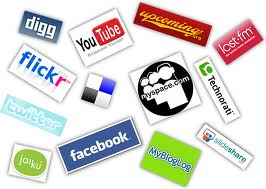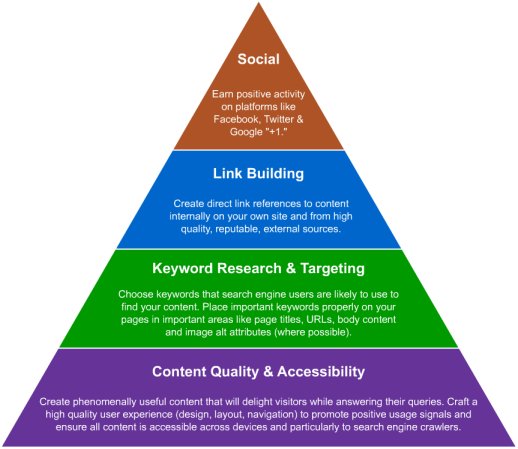Internet marketing is evolving as fast as you can build a website (obviously this isn’t written for spammers!). Each week I find new and exciting tools and methods which can expose websites to more and more targets visitors. This article won’t give you a list of 101 tools or tips, however it will give you some golden rules and tips you should live by when selling online. We’ll keep this article updated to ensure ideas and methods current and viable.
One of the most surprising facts new merchants find out is that it costs approx seven times more to gain a new customer than it does to market and generate the same income from existing customers. i.e. It costs $70 to get a new customer who spends $100, but only $10 to get an existing customer to spend the same $100. That’s a spare $60 earned by smart marketing.
There’s a stigma attached to some online marketing methods like banner or text ads as either PPC (payperclick) or PPV (payperview). The most common of these are Google Adwords and general space sale companies to deliver banners. The problem with PPC and PPV is that it might take all your budget to return only a few sales. That’s because they are typically used incorrectly.
Banner and text ads are forms of interruption marketing, they interrupt what the visitor is trying to achieve or concentrate on, sometimes as far as using pop ups. The click through rate of this method is very low since they are mostly ignored unless they are exactly what the view has been looking for all day.
To better utilize these interruption ads, you can’t simply show your logo, tagline and short description along with a cool design. You need to offer something of value, something to spark interest. E.g. if you sell shoes, offer a free training schedule just for visiting your site and entering their email. This is the key, offering a small but useful incentive in return for their email or phone number.
How many visitors do you think are wasted by allowing them to land on your home page and try to figure the rest out by themselves? Now that you have their contact, take it a little further. Send them a newsletter or customised email making an offer you know they would find valuable, e.g. Get 30% off your first order, or spend over $100 and get a free “something”. Don’t forget to lay out this email with lots of company information and testimonials.
By taking new customers step by step, you are getting their permission to take things to the next level before asking for a sale. Visitors that would have previously clicked away if they didn’t see what they wanted within three seconds, are now able to be marketed to ongoing with special offers, news and new products.
PPS (PayPerSale)
PPC and PPV advertising can difficult to monitor conversion rates for and if they are actually paying for themselves at all (although Google Adwords do help by offering conversion tracking and bid management). Another popular method which solves this is called PayPerSale or PPS. This way, ads are delivered and you only pay when a sale is made. You also get to choose what percentage of the sale you will pay. It’s certainly a winning solution.
Marketing to existing customers
The most successful sites use this permission marketing to, not only draw in new customers, but up sell to existing ones.
Your existing customers have already agreed to deal with you either temporarily or permanently, so you have passed the most critical and difficult step in building a loyal customer. Now that your customers have trust in you, your business and your products, why not continue this relationship.

 You’ll need to tune in for the next article devoted entirely to Social networking.
You’ll need to tune in for the next article devoted entirely to Social networking.
Sending newsletters to your customer base is a great way to get some quick sales through the checkout. Why? Because it’s free, often tailored, targeted and you can make special offers that others can’t get. A great example of this is www.catchoftheday.com.au who send subscriber only specials each week. For just a click of a button, your entire customer list is of a new product in seconds.
Permission marketing is a give and take relationship, but it’s important for the merchant to always offer a higher incentive than what the customer is asked for. Then, as the relationship grows stronger, increase the permission request and reward given in return. You’ll end up with a fan base rather than a customer base.
Discount vouchers and Sales
Who wants to pay full retail? Anybody?.... I assume by your silence that you would prefer 20% off the already reduced price. There’s a common phrase I hear a lot that you might be familiar with. “Only suckers pay retail” Here are a few tips to help convert more sales using sale techniques.
1. Something in your store should always be on sale. It shows activity and there’s no one I know who can resist a simple look at what’s on sale
2. Put the full retail price with a line though it, then your usual selling price with another line through it, then place your actual sale price in bold red. Whilst this may only be a fraction cheaper than other stores usually sell at, this method creates a level of urgency. You would kick yourself if you just missed out on the sale price. Seeing a sale often converts a visitor to a customer, simply because it already looks cheaper without looking at your competitors.
3. Place a discount voucher in every package you send to encourage customers to return within a time frame. Include 3 business cards at the same time to give to their friends. Another little trick is to print some custom branded stickers and place them on the product boxes so they remember where to reorder from next time.
4. Update your storefront with sale banners offering a different category or product on sale each day, week or month. E.g. For May only, we’re sending umbrellas flying out the door for half price.
5. Try offering a price match or beat guarantee. E.g. if a customer can show you a website selling the same product cheaper, you can choose to match it. Obviously this gives you the option to decline the sale too, so be careful how you use this one. It doesn’t work for every site.
Search engine optimisation (SEO)
SEO is loosely a form of marketing, simply because you don’t have a lot of control over where you rank for keywords. It is included though, since it is a form of store exposure in order to gain visitors.
I am personally a sceptic of paying hundreds of dollar for an SEO consultant to work on my site and build links each month. In our experience, search engines are getting so clever, that manual intervention such as link building and content changes are easily understood and ignored by their algorithms. So far we’ve only seen ranking improvements via SEO work in the initial stage where titles, meta descriptions and general site content and internal link structure are corrected. From then on, as long as new content is added in an SEO friendly way (which is often as simple as writing professionally) then you’ll be rewarded for not trying to trick the search engines.
One important factor I will mention is the content you add to products and content pages. Often, ranking 1st for main search terms such as “online toy store” are unachievable. Focus your wording to long tail search terms, i.e specific product names. For example “Thomas the tank engine wooden puzzle”. By giving your product a specific phrase, there will be less competition and more targeted visitors.
Search engines are simply trying to deliver the most relevant results to the end user. This may come in the form of an encyclopaedia entry, a blog post, a few websites to compare and even a dictionary result. Search engines are smarter than every SEO company in the world, otherwise their entire inventory would be ranked #1. So do yourself a favour, pay for the set up and advice and may a month or two to get you in related directories, but after that, you can do anything else required yourself for free. Ashop.com.au has not paid a single cent to SEO and we’ve ranked #1 for 6 years now.
Social Networking
Last but not least, pick a marketing niche. Monitor your competitors, see how they market and brand their stores, then find a ways to be different and push that angle till you’re blue in the face. E.g. Your competitors advertise as the cheapest, so you could advertise as the most reliable, or best support or better quality.
Marketing is often overlooked by new online merchants. So many stores are sitting there in cyberspace waiting for visitors to find their store and magically convert to a sale, tell their friends and live happily ever after. Now that you know what their missing, you can go and kick their %^&*.
I recently found a great symbolic representation of modern day SEO techniques in summary. It's a pyramid which defines the level of importance of SEO techniques relative to each other. If you stick to this in an ethical way, then you're doing better than the majority of your competition.

SEO Pyramid created by Rand Fishkin for SEOmozI recently found a great symbolic representation of modern day SEO techniques in summary. It's a pyramid which defines the level of importance of SEO techniques relative to each other. If you stick to this in an ethical way, then you're doing better than the majority of your competition.
Author: Brian Altona
Copyright 2010
